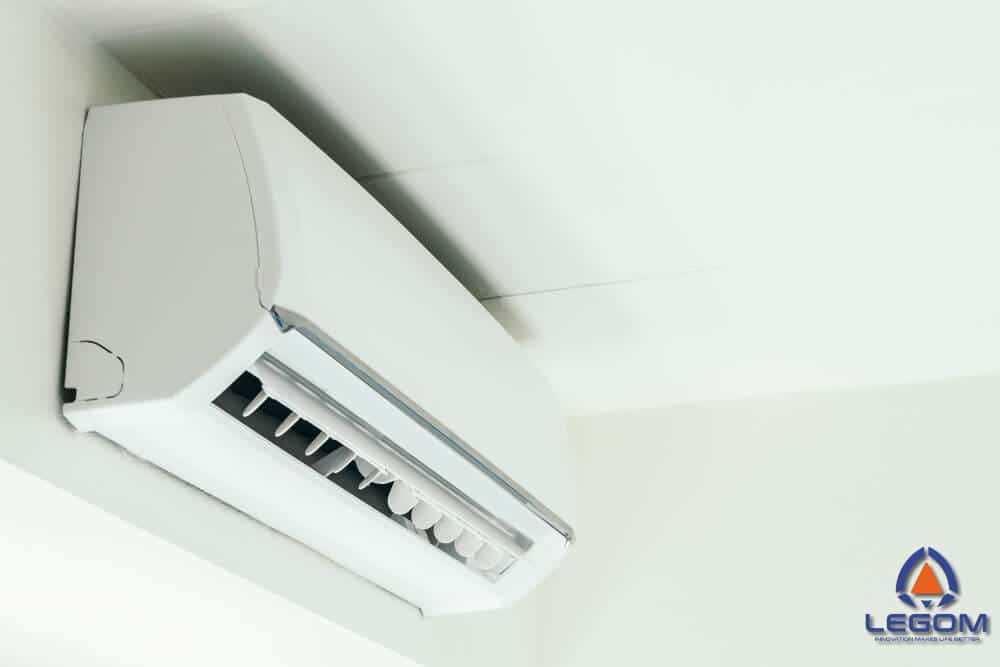
Air conditioner installation is the process of installing an air conditioning system in a room or building. This installation involves installing an indoor unit (evaporator) and an outdoor unit (condenser) as well as installing an air duct or refrigerant pipe that connects the two units. A series of installation steps must be followed carefully to ensure the system functions properly and safely.
So, how is the installation done and what are the types of installation? Let’s look at the review in the following article.
General Air Conditioner Installation Guide
Location Selection
Determine the proper location for indoor and outdoor units. Then, make sure the indoor unit is located in an area that requires cooling, while the outdoor unit can get good air circulation.
Installation of Indoor Unit
Install the indoor unit on a wall or ceiling according to the manufacturer’s instructions. Make sure the unit is installed firmly and level.
Installation of Outdoor Unit
Place the outdoor unit outside the building in an area that allows good air flow. Make sure the unit is located on a flat and stable surface.
Installation of Refrigerant Pipes
Connect the refrigerant pipe from the indoor unit to the outdoor unit according to the manufacturer’s instructions. Make sure the refrigerant pipe is well insulated.
Installation of Air Ducts (If Required)
If your AC system uses air ducts, install and connect the ducts according to the manufacturer’s instructions.
Refrigerant Charging
Fill the refrigerant according to the manufacturer’s instructions. Make sure the amount of refrigerant used is in accordance with the recommendations.
System Testing
Test the system to ensure there are no leaks and that all components are functioning properly. Check the output temperature and make sure it is as desired.
User Training
Familiarize yourself with the user information on how to use the AC system. Also understand what routine maintenance procedures are required.
Safety and Compliance
Make sure the installation complies with local safety regulations and building codes. Additionally, ensure all electrical connections are safe and comply with standards.
Types of Air Conditioner Installation
There are several types of AC installations depending on the type of unit and building configuration. Each type of installation has its own advantages and disadvantages. This means each system or type of air conditioner installation has special characteristics, features and considerations. However, the choice depends on the specific needs and conditions of the building as well as user preferences. Here are the 7 most common types of installation.
Window Installation
A window air conditioner is an air conditioning unit designed to be installed in a window. Installation involves placing the unit on the window and sealing the sides.
Pros: Easy to install, affordable price, and suitable for small spaces.
Disadvantages: Less efficient for larger rooms, and can block light from windows.
Split Installation
Split AC consists of separate indoor and outdoor units. The indoor unit is installed indoors, while the outdoor unit is placed outside the building.
Advantages: Easy to install, efficient, and suitable for cooling certain rooms.
Disadvantages: Requires refrigerant piping installation, and is more expensive than window units.
Ductless Mini-Split Installation
Similar to a split AC, but does not require a large air duct. The indoor and outdoor units are connected by a refrigerant pipe.
Advantages: Flexible, efficient, and can be used for certain zones or rooms that require cooling.
Disadvantages: Requires refrigerant pipe installation and sometimes requires more than one unit for larger rooms.
Central Installation
This system consists of a central unit that distributes cool air throughout the house or building through air ducts. Installation involves arranging the air ducts and installing the central unit. Usually in the basement or roof.
Advantages: Able to cool the entire house or building.
Disadvantages: Requires complex air duct installation, and initial installation costs are high.
Portable Installation
Portable air conditioners are units that can be moved from one room to another. Installation involves placing the unit near a window or door for hot air exhaust.
Advantages: Easy to move, does not require permanent installation.
Disadvantages: May be less efficient and less able to cool large rooms.
Central Hybrid Installation
Central hybrid air conditioner installation is a combination of central heating and cooling system. Typically use a heat pump for additional energy efficiency.
Advantages: can increase energy efficiency and reduce heating costs. Flexible for a variety of heating and cooling needs.
Disadvantages: Initial installation costs are higher than other types. In addition, it requires more complicated maintenance and repairs because it combines heating and cooling.
Ducted Installation
Similar to central installation but more complex. Involves the use of air ducts to distribute cool air.
Advantages: Suitable for large rooms with even air distribution. It also provides a clean and aesthetic appearance because there is no indoor unit displayed.
Disadvantages: Air duct installation is complex so installation costs are high. Additionally, energy can be lost through air ducts, reducing system efficiency.
Ultimately, different types of AC systems have varying installation instructions depending on the make and model. When installing, always follow the manufacturer’s instructions provided for the AC unit. Better yet, leave the air conditioner installation to a licensed professional. Because installation errors can result in performance problems, inefficient energy use, or even the risk of fire.
